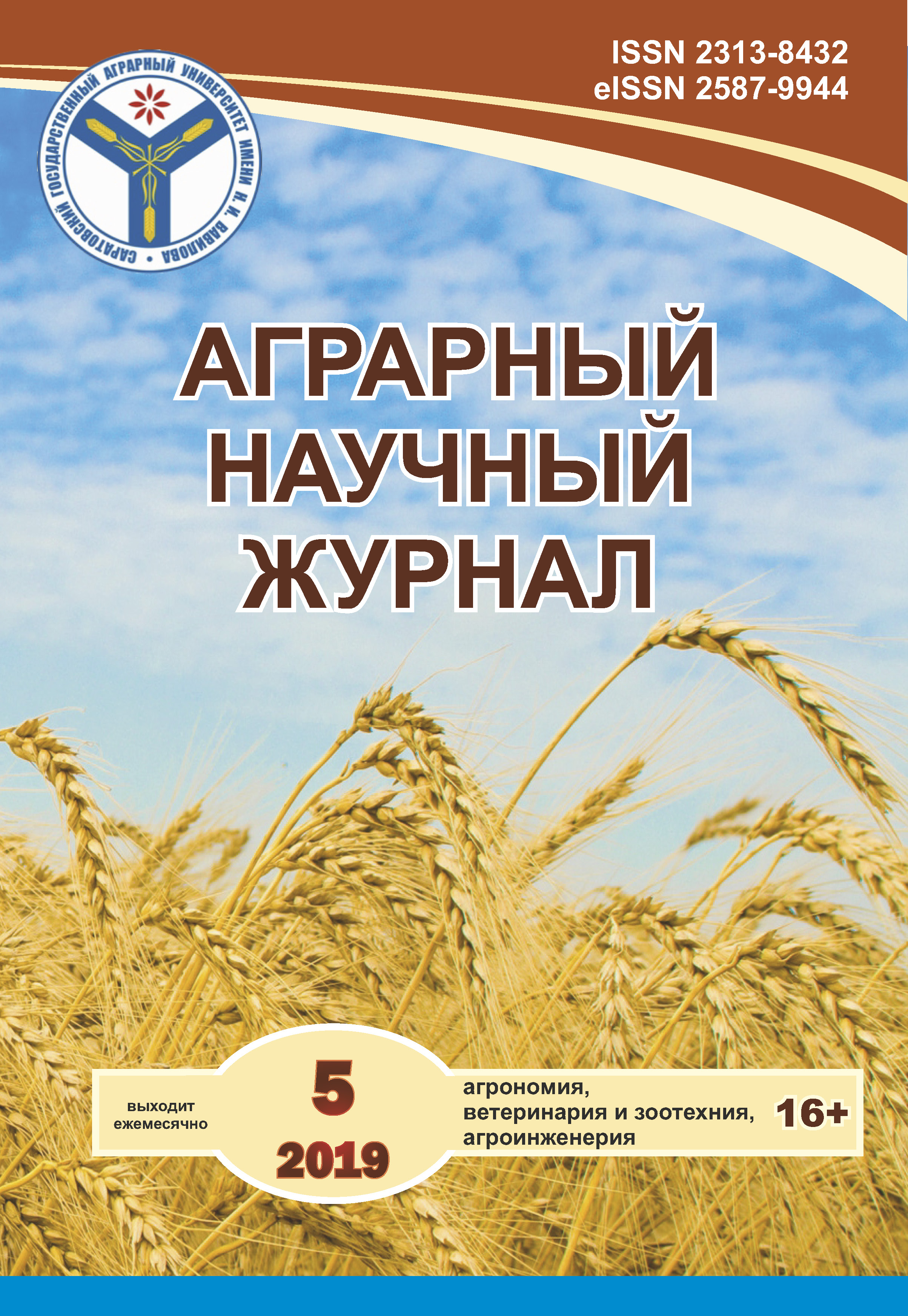Phytopathological characteristics of the variety as immunogenetic treatmentof the integrated protection of winter wheat against diseases
DOI:
https://doi.org/10.28983/asj.y2019i5pp38-42Keywords:
winter wheat, varieties, Septoria leaf spot, Pyrenophoraleaf spot, powdery mildew, root rot, susceptibility, fungicidesAbstract
Among the factors that reduce the quality and quantity of winter wheat grain a special place is occupied by root rot and basal rot, as well as leaf infections. The results of studies have shown the feasibility of a comparative assessment of the incidence of winter wheat diseases in specific agro-climatic conditions of cultivation. Moreover, favorable immunological characteristics of the cultivated variety ensure the responsiveness of winter wheat to the protective measures being carried out. At the end of tillering and the beginning of tubing, the cultivar of the winter wheat, the least affected root rot, was Dolya. At the same time, the share grade showed the greatest responsiveness to pre-sowing seed treatment. In these specific conditions of winter wheat cultivation in the zone of unstable moisture on leached chernozem only the Dolya showed high resistance to Septoria leaf spot (prevalence – 91.6%; development – 8.6%) and confirmed its immunological characteristics. With regard to Pyrenophora leaf spot, the Grom variety for the aggregate of two prevalence and development rates (prevalence - 42.5%, development - 1.3%) was the least affected by the disease. It is possible that the intensive development of Septoria leaf spot does not allow the second pathogen to develop in one ecological niche. Winter wheat varieties Vassa as a medium-early variety at the time of application of the fungicide in the phase of unfolding a flagship sheet ahead of the physiological development of the variety Dolya and Grom. Older plant tissues are more affected by pathogens of spotting, which by type of food belong to the group of necrotrophs. Accordingly, the responsiveness of the variety to fungicidal treatment was low.
Downloads
References
2. Герасимов С.В., Овсянников А.В. Оценка сортов яровой пшеницы и яровой тритикале на устойчивость к болезням в условиях Владимирской области // Современные проблемы иммунитета растений к вредным организмам: материалы 3-й Всерос. и Междунар. конф., Санкт-Петербург, 23–26 окт. 2012. – СПб., 2012. – С. 207–208.
3. Кремнева О.Ю., Волкова Г.В., Сегеда Е.С. Устойчивость сортов озимой пшеницы к возбудителю желтой пятнистости листьев // Научный журнал КубГАУ. – 2013. – № 91(07).– С. 1–11.
4. Маркелова Т.С. Результаты селекции озимой и яровой пшеницы на устойчивость к болезням в условиях Нижнего Поволжья // Аграрный научный журнал. – 2015. – № 4. – С. 26–27.
5. Методические указания по регистрационным испытаниям фунгицидов в сельском хозяйстве / под ред. В.И. Долженко. – СПб., 2009. – 378 с.
6. Порсев И.Н., Малинников А.А., Евсеев В.В. Инновационные фунгициды АО «Щелково Агрохим» в борьбе с листостеблевыми инфекциями яровой пшеницы в Зауралье // Вестник Курганской ГСХА. – 2015. – № 3 (15). – С. 45–48.
7. Прогноз фитосанитарного состояния сельскохозяйственных культур Ставропольского края на 2018 год и системы защитных мероприятий / под общ. ред. В.В. Дридигер. – Ставрополь: Бюро новостей, 2018. – 176 с.
8. Сорта пшеницы и тритикале: каталог / ФГБНУ «НЦЗ им. П.П. Лукьяненко»; редколлегия: А.А. Романенко [и др.]. Краснодар: ЭДВИ, 2018. 164 с.
9. Тутржанс Л.В., Шутко А.П. Эффективность препаратов Доспех 3 и Комфорт в отношении корневых гнилей // Эволюция и деградация почвенного покрова: материалы IV Междунар. науч. конф. – Ставрополь, 2015. – С. 373–376.
10. Шутко А.П. Биологическое обоснование оптимизации системы защиты озимой пшеницы от болезней в Ставропольском крае : автореф. дис. … д-ра с.-х. наук. – СПб. – Пушкин, 2013. – 47 с.
11. Яковлева Н.П. Фитопатология. Программированное обучение. –М.: Колос, 1983. – 271 с.








